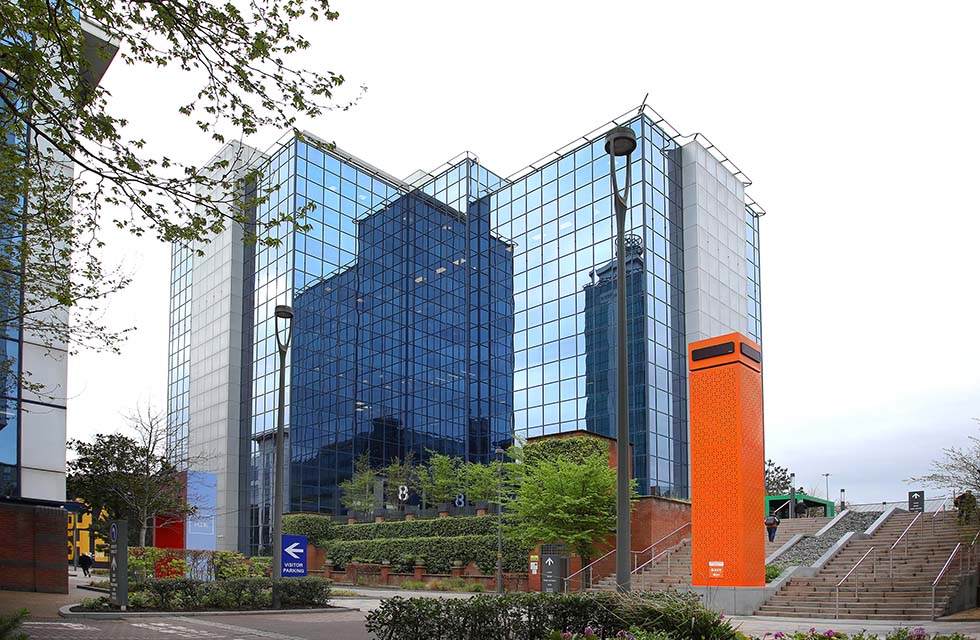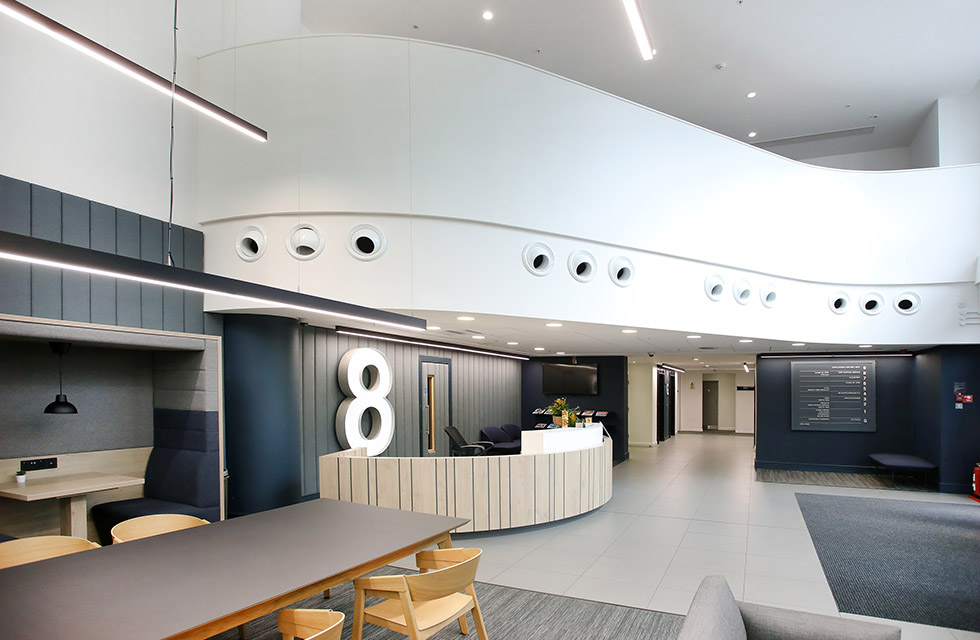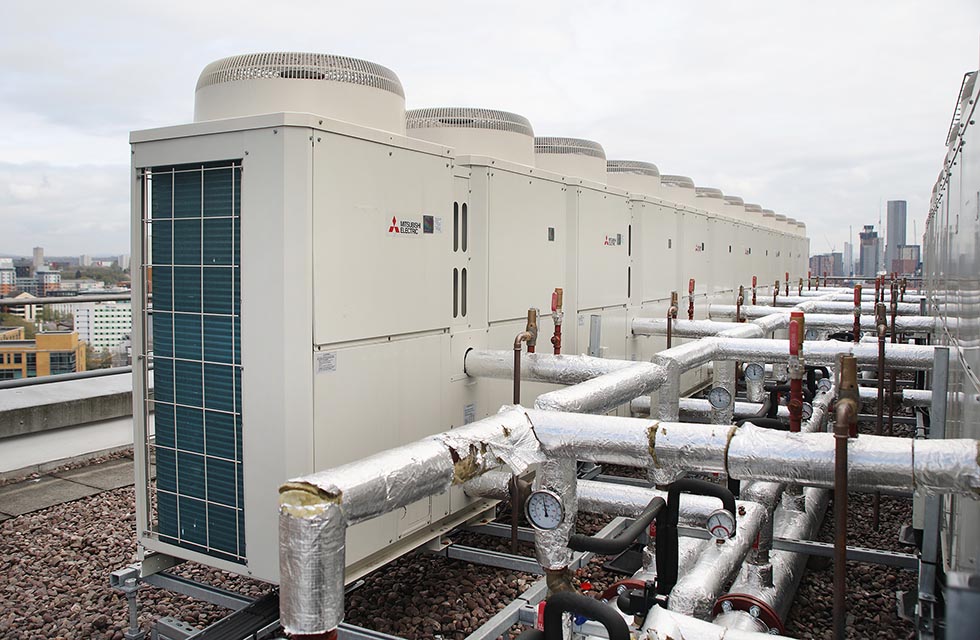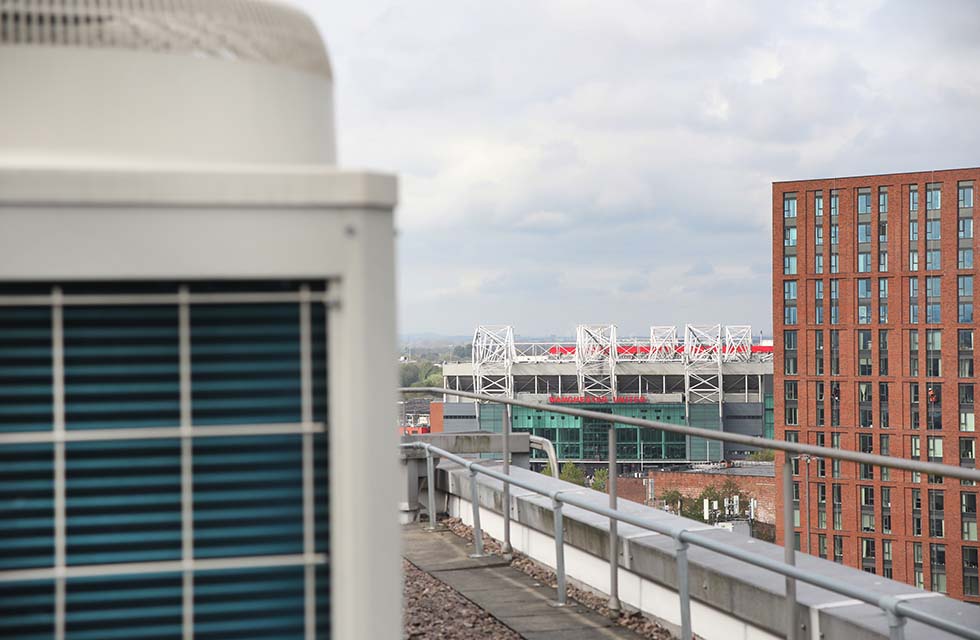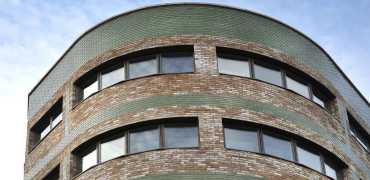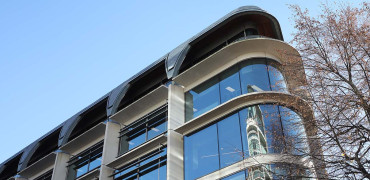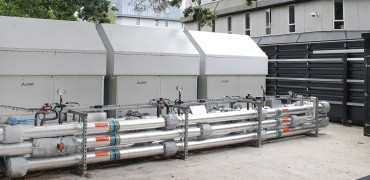At Refurb Projects, we love hearing how innovation is helping bring existing buildings up to modern standards and getting them on the road to net zero.
This new case study from Manchester shows how developers and building owners can get ahead of legislation by replacing gas boilers with heat pumps.
And when you consider that according to the UK Green Building Council, around 80% of the buildings that we will use in 2050 have already been built, then you can see the scale of the ‘retrofit challenge’ and just why stories like this one are so important.
Exchange Quay, a landmark office campus in Manchester, has significantly improved the energy efficiency of one of its major buildings by replacing gas boilers with Mitsubishi Electric commercial air source heat pumps.
The project shows how to replace gas with heat pumps without a complete overhaul
From an ‘E’ to a ‘B’ rating
The upgrade has enabled Building Eight, a ten-storey office block on the campus, to achieve an Energy Performance Certificate (EPC) rating of B, aligning with future Minimum Energy Efficiency Standards (MEES) and paving the way for full gas removal.
At the moment, the way things are going, commercial offices look likely to need a minimum EPC rating of C by 2027, and a rating of B by 2030.
The installation was commissioned by the landlord, Till Asset Management (Tillam), as part of its long-term plan to decarbonise its portfolio and meet growing tenant demand for energy and ESG credentials.
]The company appointed air conditioning contractor Austin Broady to deliver a system that could reduce emissions and running costs without disrupting existing occupants.
“One of the most important things for our tenants now is their credentials in terms of carbon emissions, energy and social governance,” said Les Lang, Director at Tillam. “So, our challenge is how we can upgrade our buildings to reduce their energy use and carbon footprint, without disturbing or decanting existing tenants.”
Decarbonisation for the local climate
Developed in the 1980s, Exchange Quay is one of the largest office campuses in the North-West, featuring ten buildings and a wide range of amenities.
Building Eight is among the largest on-site, and its decarbonisation presented a specific challenge: how to deliver meaningful carbon savings without a complete overhaul of its heating, ventilation and air conditioning (HVAC).
Mitsubishi Electric’s CAHV commercial heat pumps were selected as the optimal solution. Twelve CAHV-P500YB-HPB heat pumps, each offering 40 kW, were installed in a cascaded configuration, to optimise performance and length equipment life. The design leveraged historical climate data to size the system effectively for local winter conditions, ensuring reliability even during the city’s coldest months.
By delivering hot water temperatures of up to 70°C without the need for supplementary heaters, the CAHV system provides low-carbon heating across all ten floors via existing four-pipe fan coil units. This approach avoided intrusive works and enabled a phased transition off gas. CAHV units can be cascaded together to provide scalable heating performance of up to 688 kW.
Proof through performance
The system passed its first real-world test during one of Manchester’s coldest winters in a decade. With Building Eight now operating comfortably and efficiently, Tillam plans to remove the legacy gas system entirely.
“The project has been really successful, as we’ve just had a very cold winter, the coldest for ten years,” added Les Lang. “Now we’ve had that experience, and the system has worked perfectly, we are in a position where the gas will be removed from the building.”
Following the project’s success, Tillam has committed to upgrading Building One later this year, with Building Five scheduled shortly after. The wider goal is to futureproof the entire Exchange Quay estate while sharing learnings with other landlords facing similar challenges.
“We are now looking at other buildings in other parts of the country, and we are bringing landlords to this site to show them what we’ve done,” said Mark Broady, Managing Director at Austin Broady. “We’re showing them our design and how we reached the solution, and they’re now sufficiently confident to roll this sort of project out in their buildings.”
A video showing the work undertaken at Exchange Quay Building 8 is also available.
Carole Titmuss is Editor of Refurb Projects


